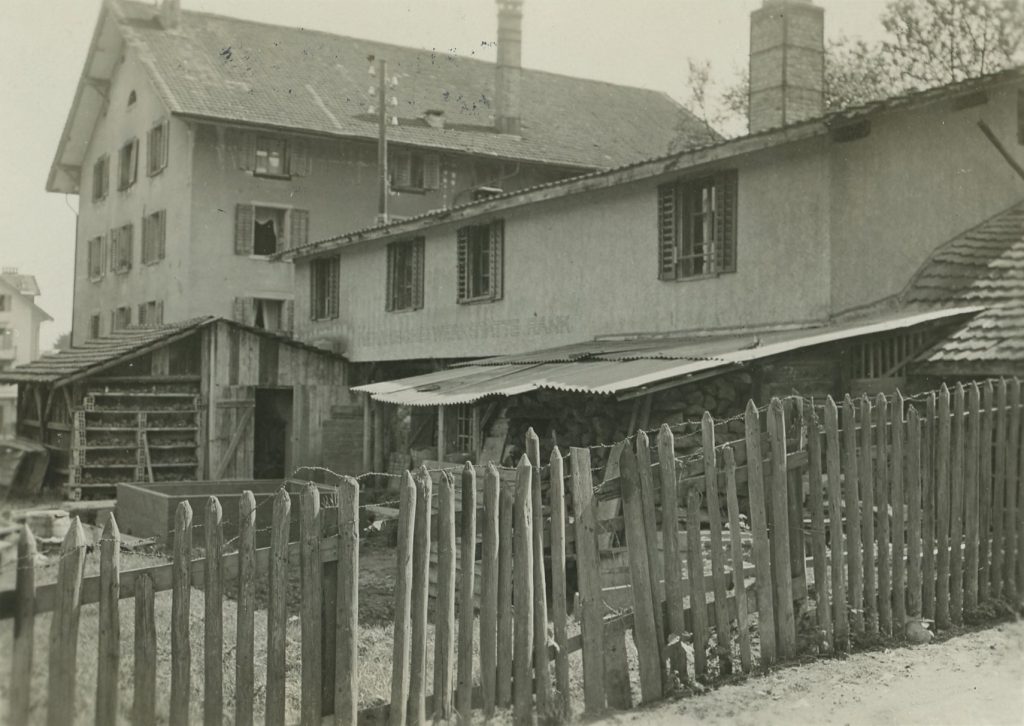

The potter’s workshop at Rankhof, 30 Maihofstrasse, Lucerne, c. 1925-1935. The words “Keramische Werkstätte Rank” (Rank potter’s workshop) are still just about legible on the street-facing façade (from the Kunstkeramik AG Luzern company archive, today in the State Archive of Lucerne).
Lucerne Pottery Association, pottery in CERAMICA CH
Andreas Heege, Margret Loder, 2021
On 1st January 1918, Bernhard von Euw from Schwyz, Hans Schmid-Brunner from Waltenschwil and Julius Reber from Sempach, all of whom were residing in Lucerne at the time, set up the partnership “Euw, Schmid & Cie, Keramische Werkstätte”. The company premises were located at Rankhof, 30 Maihofstrasse (SOGC 36, 1918, 454, 18th March 1918). The workshop, however, was only rented and was located in what used to be a carpenter’s workshop and glue mixing plant owned by the Vinzenz Peter´s family (Lucerne City Archive, Häuserchronik, B3.31/A1.28 & B1.500/1870). In 1916, the workshop, which had a rather unusual “dumbbell” shape, had a shed built onto it in lightweight construction as well as a timber storage yard in front of it. On 17th October 1916, Bernhard von Euw, who was an architect, was granted planning permission to install “a firing kiln as part of a ceramic workshop”, which he had probably applied for with a view to setting up the company (Lucerne City Archive, Häuserchronik, B3.31/A1.70-B1.103/1916). According to the drawings submitted, it was a vertical, wood-fired updraught kiln with a rectangular ground plan as was standard at the time in Switzerland. Further planning permission was granted on 7th March 1918 to add an upper storey to the building and a dry room for the “ceramic workshop”, which had by that stage been set up (Lucerne City Archive, Häuserchronik B3.31/A1.20&B1.35/1918). Who exactly managed the workshop or produced the pottery, is not known. We do know, however, that the company placed an advert in the Tagblatt der Stadt Thun (42, issue 63) on 16th March 1918 seeking a “thrower to work an electric potter’s wheel”, which suggests that they were hoping to recruit staff from the potters’ region of Heimberg-Steffisburg. The partnership “Euw, Schmid & Cie, Keramische Werkstätte” was dissolved on 1st June 1920 and the company including the workshop was sold to “Keramik Luzern” (Lucerne Pottery Association) (SOGC 38, 1920, 2358, 9/12/1920). None of the products made by the “Keramische Werkstätte” are known and no company mark appears to have been registered.
The Lucerne Pottery Association was a new company, but some of the same people were still involved. The articles of association date from 3rd April 1920. The purpose of the association was “… to revive the old Swiss craft of pottery making and bring it to new heights, both from an artistic and from a technical standpoint…”. Hans Bossard (a man of independent means) was the president of the board of directors, Theodor Fischer (an antiquarian) was vice-president. Other members of the board included Bernhard von Euw (an architect) and Hans Schmid (a businessman). Although he was involved, businessman Oskar Gloggner from Lucerne did not sit on the board. The production hall and business premises remained at 30 Maihofstrasse road (SOGC 38, 1920, 1682a, 17/6/1920 and in the “Neue Zürcher Nachrichten” 16, issue 285, 18/10/1920). Bernhard von Euw and Hans Schmid only sat on the board until 30th March 1921. They were replaced by Ernst Villiger, an antiquarian from Zofingen, who was living in Zurich at the time (SOGC 39, 1921, 774).
The first sales negotiations with Emil Loder from Steffisburg took place as early as 1924 and were successfully concluded in 1925. On 30th March 1925, the company “Loder-Schenk Kunstkeramik” was registered in the Swiss Official Gazette of Commerce with an address at 30 Maihofstrasse road (SOGC 43, 1925, 563). On 12th May 1925, the general assembly of the Lucerne Pottery Association decided to liquidate the company and put Hans Bossard in charge of the liquidation. The company was ultimately deleted from the register on 22nd September 1926 (SOGC 43, 1925, 932; 44, 1926, 1701).
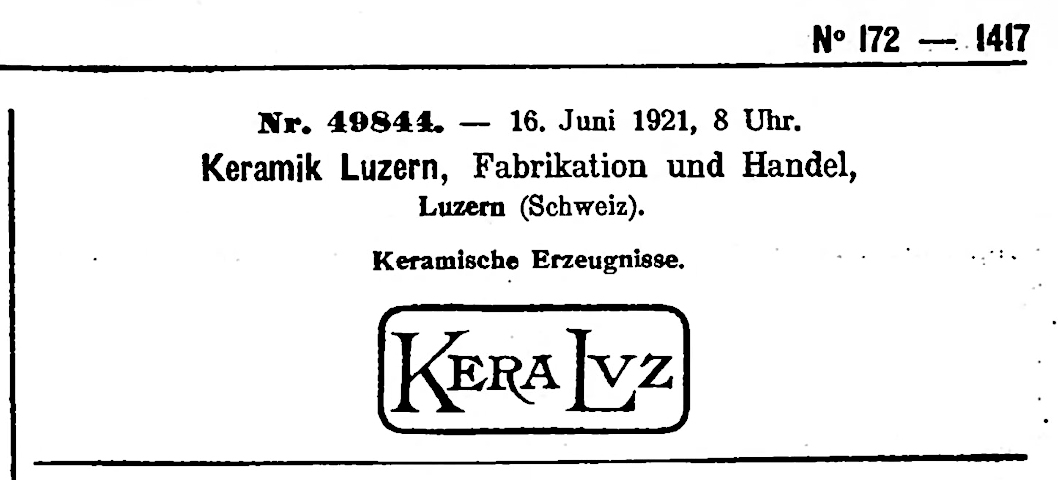
The factory mark “KERALUZ” (for the Lucerne Pottery Association) was registered in the Swiss Official Gazette of Commerce under the number 49844 on 16th June 1921 (SOGC 39, 1921, 1417, 16/6/1921. It was not until 6th January 1942 that the mark was eventually struck from the register due to non-renewal: SOGC 60, 1942, No. 11, S. 123). The same mark can also be found on the company letterhead kept in the Lucerne State Archive.
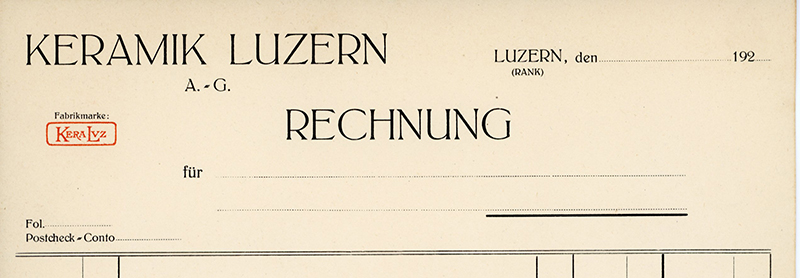
Letterhead of the Lucerne Pottery Association from c. 1921 to 1925 (from the Kunstkeramik AG Luzern company archive, today in the State Archive of Lucerne).
Without this mark almost nothing would be known about the production of “Keramik Luzern”. The Historical Museum of Lucerne has in its collection four vases and one plate with the impressed mark “KERALUZ” (c. 15–16 x 7.5–8 mm).
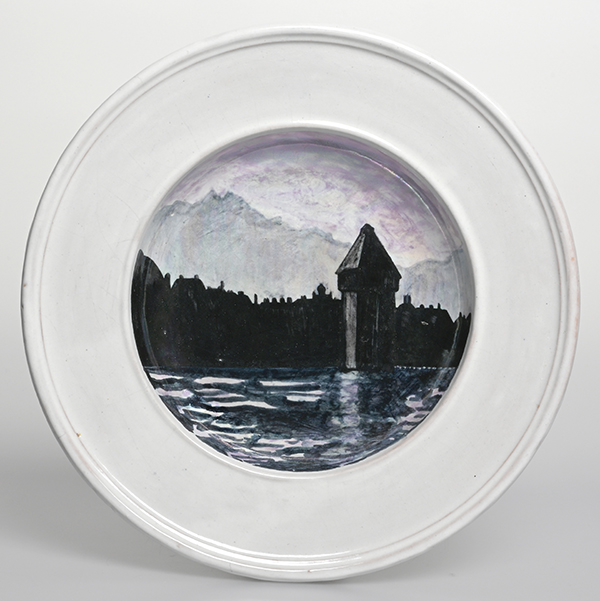
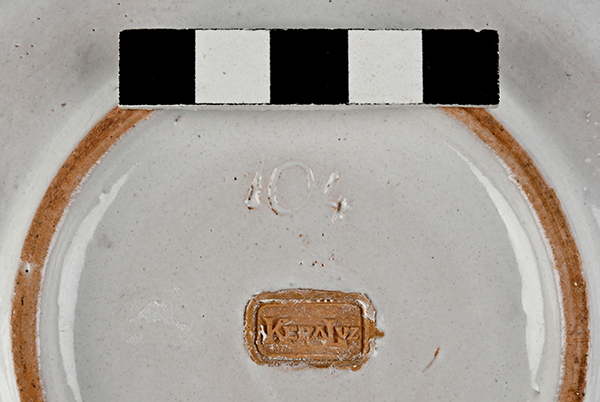
Three vessels came from the Rochat collection, while the other two were found in the attic of the successor company “Kunstkeramik A.G. Luzern” in Ebikon (HMLU 11732.187, 11732.215, 11732.785 and HMLU 13865.193 und 13865.211). Another vase comes from a private collection in Switzerland.
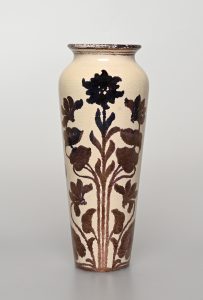
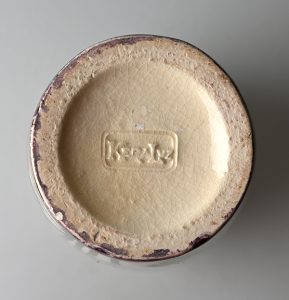
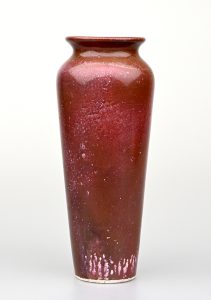
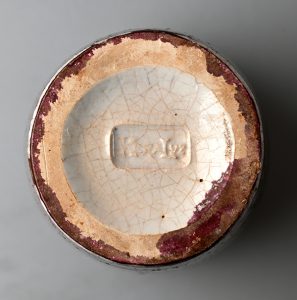
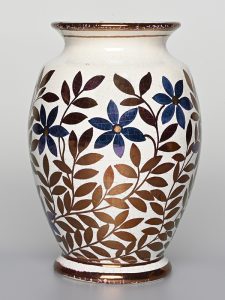
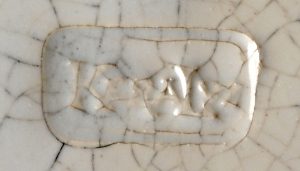

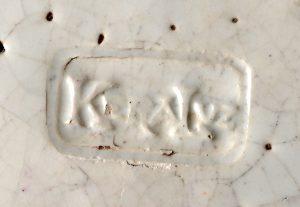
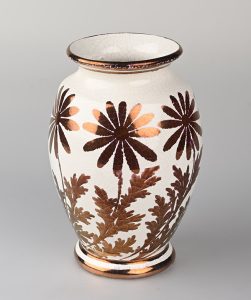
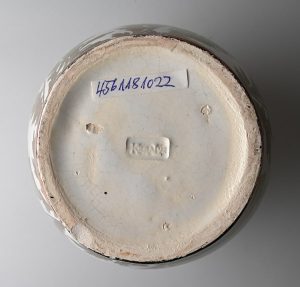
Five of the vessels are unusual in that they were painted with a blue or copper-coloured lustre, three over a faience glaze and one on slipped and glazed earthenware. Lustreware is not known to have been produced, either during the time of Emil Loder & Adolf Schweizer in Steffisburg (1919-1925), or during the subsequent period of Emil Loder’s Kunstkeramik AG in Lucerne. Despite the fact that Emil Loder retained the name KERALUZ on his first company letterhead and used the “KERALUZ” impressed mark between 1932 and 1938, albeit with a different design, it nevertheless seems likely that these pieces were made by the Lucerne Pottery Association.

Letterhead of the Kunstkeramik AG Luzern following the acquisition of the Lucerne Pottery Association (Keramik Luzern) in 1925. Note the KERALUZ logo, which points to the continuity between the two businesses.
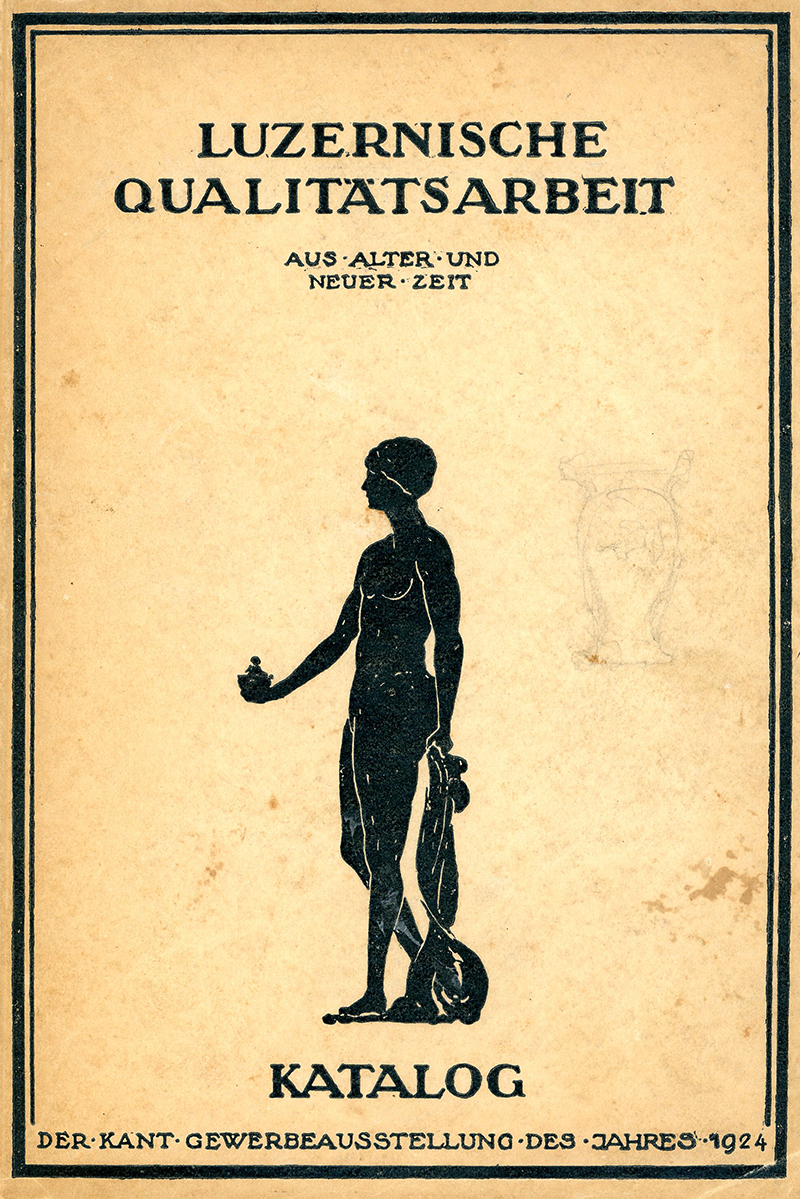
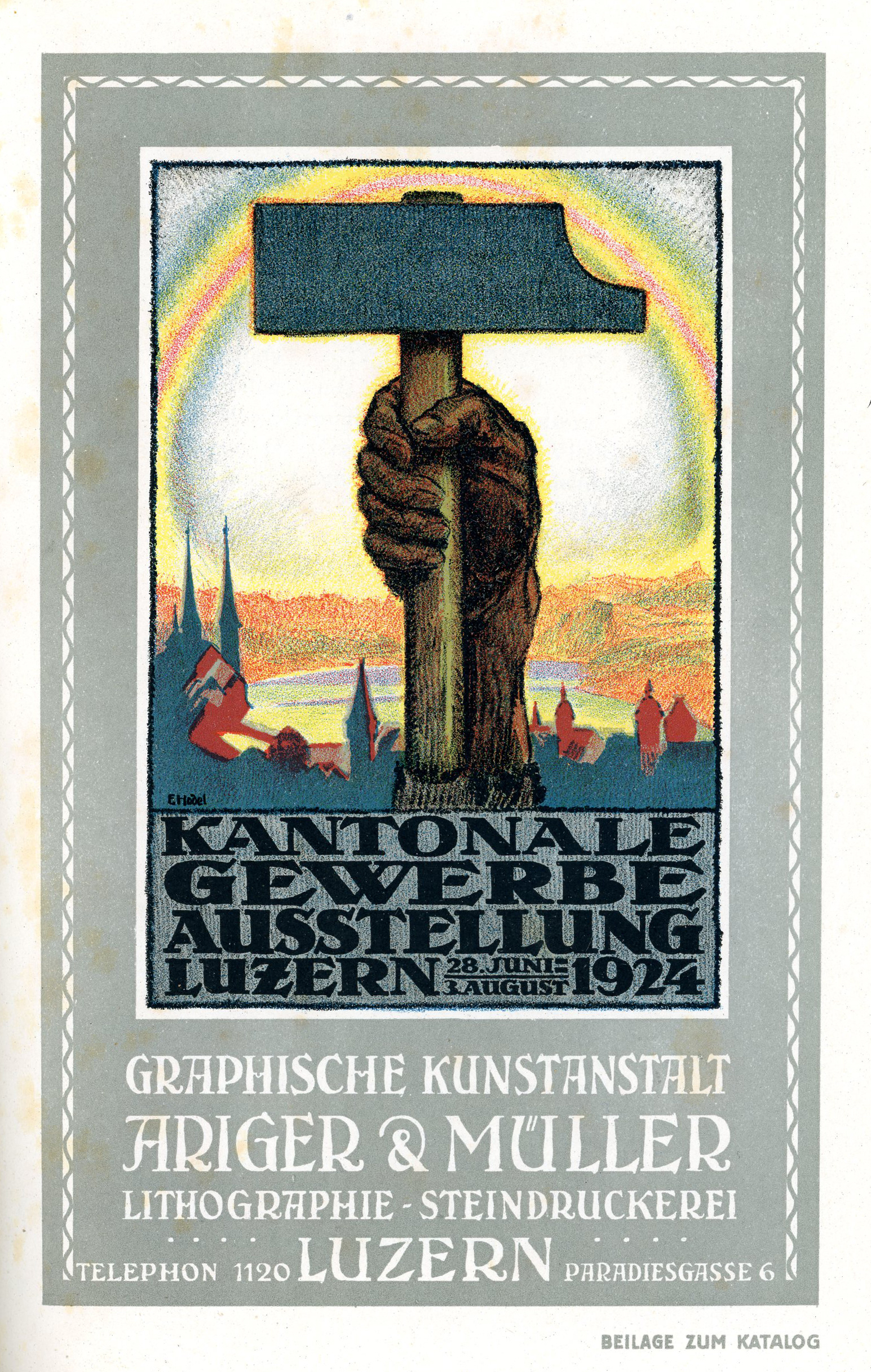
The only other place we can find any evidence of the Lucerne Pottery Association is in Group XV, “Decorative objects and Arts and Crafts”, at the 1924 Cantonal Trade Exhibition entitled “Lucerne quality products from the past and present” (28th June to 3rd August 1924, exhibitor no. 210).
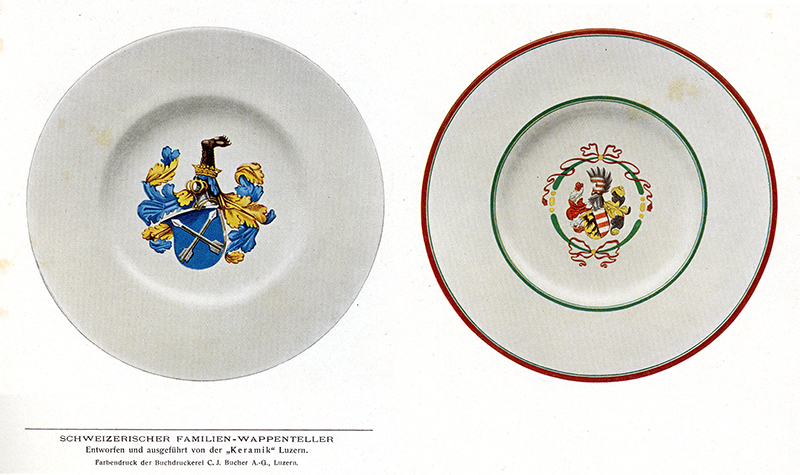
Two collotype plates from the exhibition catalogue (Schwendimann 1924) show that the company also produced large armorial plates.
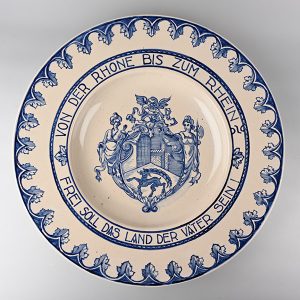
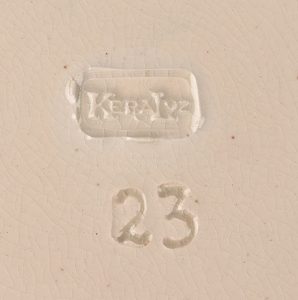
A plate bearing the coat of arms of the canton of Graubünden was recently documented in a Swiss private collection.
Sources:
Lucerne State Archive, A 1044/12348 von Euw, Schmid & Cie. \ Luzern, 1918-1920;
A 1044/8248 Genossenschaft Keramik \ Luzern, 1923-1928.
Lucerne City Archive: Planning Applications from 1916 and 1918.
Translation: Sandy Haemmerle
References:
Schwendimann 1924
Johannes Schwendimann, Luzernische Qualitätsarbeit aus alter und neuer Zeit. Katalog d. Kantonalen Gewerbe-Ausstellung 1924, Luzern 1924.

